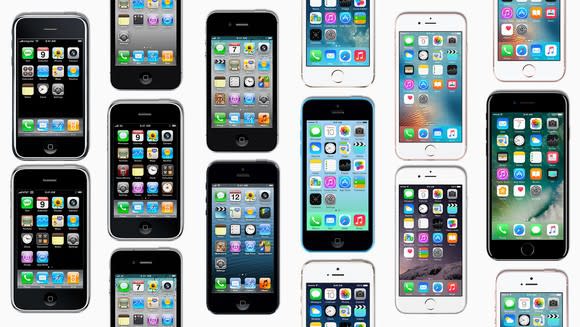Apple Inc.'s Marketing Chief Made a Mistake
Shortly after Apple (NASDAQ: AAPL) launched the iPhone 8 and iPhone 8 Plus smartphones, DxOMark Image Labs published the results of its testing of the cameras on the iPhone 8 and iPhone 8 Plus.
By way of background, DxOMark Image Labs tests the various still photography and video capabilities of mobile phone cameras, assigns each aspect a score, and then provides composite scores for the still photography and video capabilities of the cameras. DxOMark also provides a single score that incorporates both of the aforementioned sub-scores.

Image source: Apple.
The iPhone 8 Plus achieved a composite score of 94 in DxOMark Image Labs' testing, with sub-scores of 96 for still photography and 89 for video. At the time, DxOMark Image Labs said that this was the best mobile camera that it had ever tested.
Apple marketing chief Phil Schiller, the individual who has presented the key new features of Apple's new iPhones at Apple's product release keynotes for years now, tweeted out a link to DxOMark's iPhone 8 Plus testing.
Here's why that was a mistake.
Apple legitimized the test results
It wasn't long before the iPhone 8 Plus was beaten in DxOMark by the Pixel 2 smartphone, which achieved a composite score of 98. The iPhone X, which was tested after the Pixel 2 was, only achieved a composite score of 97.
To make matters worse for Apple's lineup, the newly launched Galaxy S9+ achieved a composite score of 99 across DxOMark Image Labs' testing suite.
By tweeting out a link to the DxOMark results of the iPhone 8 Plus, Schiller, in effect, made it clear that he and, indeed, Apple as an organization, approve of using DxOMark scores as an objective measure of smartphone camera quality and capability.
This seal of approval from Schiller will make it easier for Apple's competitors -- whose devices beat out Apple's three flagship smartphones in DxOMark's tests -- to advertise to consumers that their smartphone cameras are better than anything that Apple has to offer.
Given that iPhone X demand has already waned significantly, Apple really doesn't need to have it advertised far and wide that it doesn't have a leading mobile camera on its $999-plus smartphone by a metric that Apple itself accepts as legitimate.
Apple's task
At this point, it's clear what Apple's task is -- it needs to get back to offering products that earn leading DxOMark camera scores. The company can probably do that, especially if it continues to produce new iPhone models that start at $999 and go up from there, as those high prices will give it more room in its component bill of materials to use better optics and superior image sensors.
However, I don't think it'll come down to just using better hardware (though these will absolutely be required) -- Apple is going to need to dramatically improve the software and algorithms that are used to produce the final images.
To achieve this, Apple will likely need to double down on its investments in a key hardware component that's integrated into its A-series applications processors, known as the Image Signal Processor (ISP). Apple faces fierce competition here, however, as rival smartphone chip makers innovate quite aggressively on this front. (The results give Apple's rivals easy access to top-end mobile imaging technology).
I look forward to seeing how the upcoming iPhone X upgrade and its larger sibling, the iPhone X Plus, perform in DxOMark Image Labs' testing.
More From The Motley Fool
Ashraf Eassa has no position in any of the stocks mentioned. The Motley Fool owns shares of and recommends Apple. The Motley Fool has the following options: long January 2020 $150 calls on Apple and short January 2020 $155 calls on Apple. The Motley Fool has a disclosure policy.
